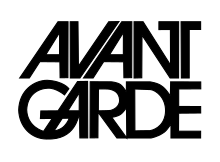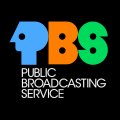ITC Avant Garde
 | |
| Category | Sans-serif |
|---|---|
| Classification | Geometric sans-serif |
| Designer(s) | Herb Lubalin, |
| Foundry | International Typeface Corporation |
| Date released | 1970-1977 |
ITC Avant Garde Gothic is a geometric sans serif font family based on the logo font used in the Avant Garde magazine. Herb Lubalin devised the logo concept and its companion headline typeface, and then he and Tom Carnase, a partner in Lubalin's design firm, worked together to transform the idea into a full-fledged typeface.
The condensed fonts were drawn by Ed Benguiat in 1974, and the obliques were designed by , and in 1977.
The original designs include one version for setting headlines and one for text copy. However, in the initial digitization, only the text design was chosen, and the ligatures and alternate characters were not included.
The font family consists of five weights (four for condensed), with complementary obliques for widest width fonts.
When ITC released the OpenType version of the font, the original 33 alternate characters and ligatures, plus extra characters were included.
Elsner+Flake also issued the ligatures and alternate characters separately as Avant Garde Gothic Alternate.
Cold Type versions[]
ITC Avant Garde was never cast into actual foundry type, appearing first only in cold type. , Autologic, Berthold, Compugraphic, Dymo, , Harris, Mergenthaler, , and Varityper all sold the face under the name Avant Garde, while Graphic Systems Inc. offered the face as Suave.[1]
Digital versions[]
ITC Avant Garde Gothic Pro[]
It is an OpenType variant of the original ITC Avant Garde Gothic, plus a suite of additional cap and lowercase alternates, new ligatures, unicase glyphs. It supports ISO Adobe 2, Adobe CE, Latin Extended character sets.
In addition, the obliques are altered from the original, where optical corrections are no longer used.[2]
ITC Avant Garde Mono[]
It is a monospaced version designed by in 1983.
Digital version was produced by Elsner+Flake. The family consists of 4 fonts in 2 weights (bold and light) in 1 width, with complementary italics.
William Sans LET[]
William Sans LET is a very similar font, but the "regular" typeface is known as "Plain 1.0".
Derivatives[]
is a slab-serif version of ITC Avant Garde, also designed by Lubalin.[3]
Uses[]

Used as the logo of the Government of Alberta until 2009, and appeared on standard Vehicle registration plates of Alberta until 2019.

Century 21 logo from 1972 to 2018

Defected Records uses the ITC Avant Garde Bold font for their Logos and Posters.[4][5][6]

The Macy's logo used Avant Garde typeface in its extra light style until 2019.

The Netflix TV series Master of None used the font for its title cards. The title itself uses ITC Avant Garde Gothic with alternatives.[7]

The 1971 PBS logo uses this font for its full broadcaster name text.

Since 1976, Rede Globo uses a custom version of the ITC Avant Garde font for its wordmark and for another of its logos.[8]

Vehicle registration plates of Texas used Avant Garde typeface for the state name on Passenger base plates from 1986 to 1990, and until 2002 on handicap and personalized plates.
Miscellaneous[]
- Main font used for the Eurovision Song Contest 2011, including the slogan and voting scoreboard.[10]
- Used as the logo for GM Goodwrench until the brand was renamed GM Certified Service in 2011.
- Rock Band video games, one through three, use the font for its menus. In the first game, the alternative characters are mainly used.[11][12]
- Used in title sequence of Stranger Things for the actors' and actresses' names fading in and out.[citation needed]
- Used in the opening and closing credits of the Back To The Future trilogy.
- Used in the opening and closing credits of Beethoven and Beethoven’s 2nd.
- Used in the opening and closing credits of National Lampoon’s Vacation and European Vacation.
- Used in general signage for the defunct Walt Disney World Resort attraction, ExtraTERRORestrial Alien Encounter.
Similar[]

- is a similar font with identical metrics, intended for use as a replacement for ITC Avant Garde in the PostScript Base 35 fonts for the Ghostscript program. The font has since been released under free and open source terms.
- is an open-source extension of the above font adding many new characters, and special alternate glyphs.
See also[]
- Century Gothic
- Futura (typeface)
- Avant Garde (magazine)
References[]
- ^ , Archie Provan, and Frank Romano, Primer Metal Typeface Identification, National Composition Association, Arlington, Virginia, 1976, pp. 34 - 35.
- ^ Ain't What ITC Used to Be
- ^ ITC Lubalin Graph Font Family - by Herb Lubalin, Ed Benguiat
- ^ "Fonts Logo » Defected Logo Font". fontslogo.com. Retrieved 2019-03-05.
- ^ "Font ?! - forum | dafont.com". www.dafont.com. Retrieved 2019-03-05.
- ^ "YOU ARE DEFECTED - forum | dafont.com". www.dafont.com. Retrieved 2019-03-05.
- ^ "Master of None Logo?? - forum | dafont.com". www.dafont.com. Retrieved 2018-07-21.
- ^ "Por que não se deve usar a fonte AvantGarde • IFDBlog". IFD Comunicação (in Portuguese). 2006-04-25. Retrieved 2020-02-17.
- ^ "RE/MAX BRAND REFRESH". RE/MAX. August 2017. Retrieved 2020-07-09.
- ^ "The Branding Source". brandingsource.blogspot.com. Retrieved 2020-01-13.
- ^ "Rock Band Fonts — Harmonix Forums". forums.harmonixmusic.com. Retrieved 2018-12-30.
- ^ "Rock Band Credits Part 1". Retrieved 2018-12-30.
External links[]
| Wikimedia Commons has media related to ITC Avant Garde. |
- ITC Classics: ITC Avant Garde Gothic Pro
- What's Hot From ITC: October 2005
- Type Trading Card #11
- ITC Avant Garde Gothic Font Family - by Herb Lubalin, Tom Carnase (renewed reference)
- Paratype: ITC Avant Garde Gothic font
- FontShop: Avant Garde Gothic Alternate
- ITC Avant Garde Mono - now a suspended page
- Adobe - ITC Avant Garde Gothic Std Full Family
- Geometric sans-serif typefaces
- Newspaper and magazine typefaces
- Photocomposition typefaces
- Digital typefaces
- International Typeface Corporation typefaces
- Typefaces drawn by Team ’77





